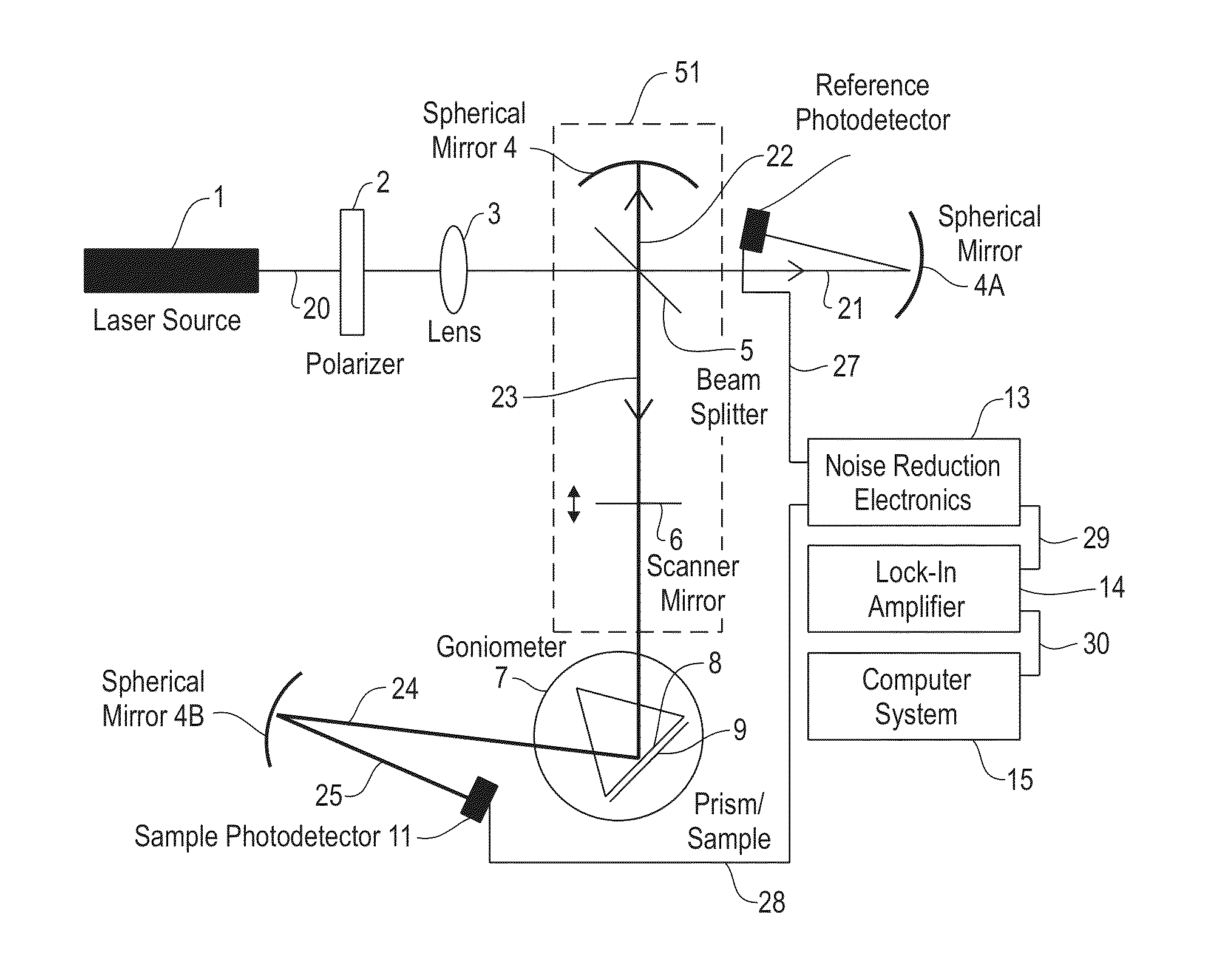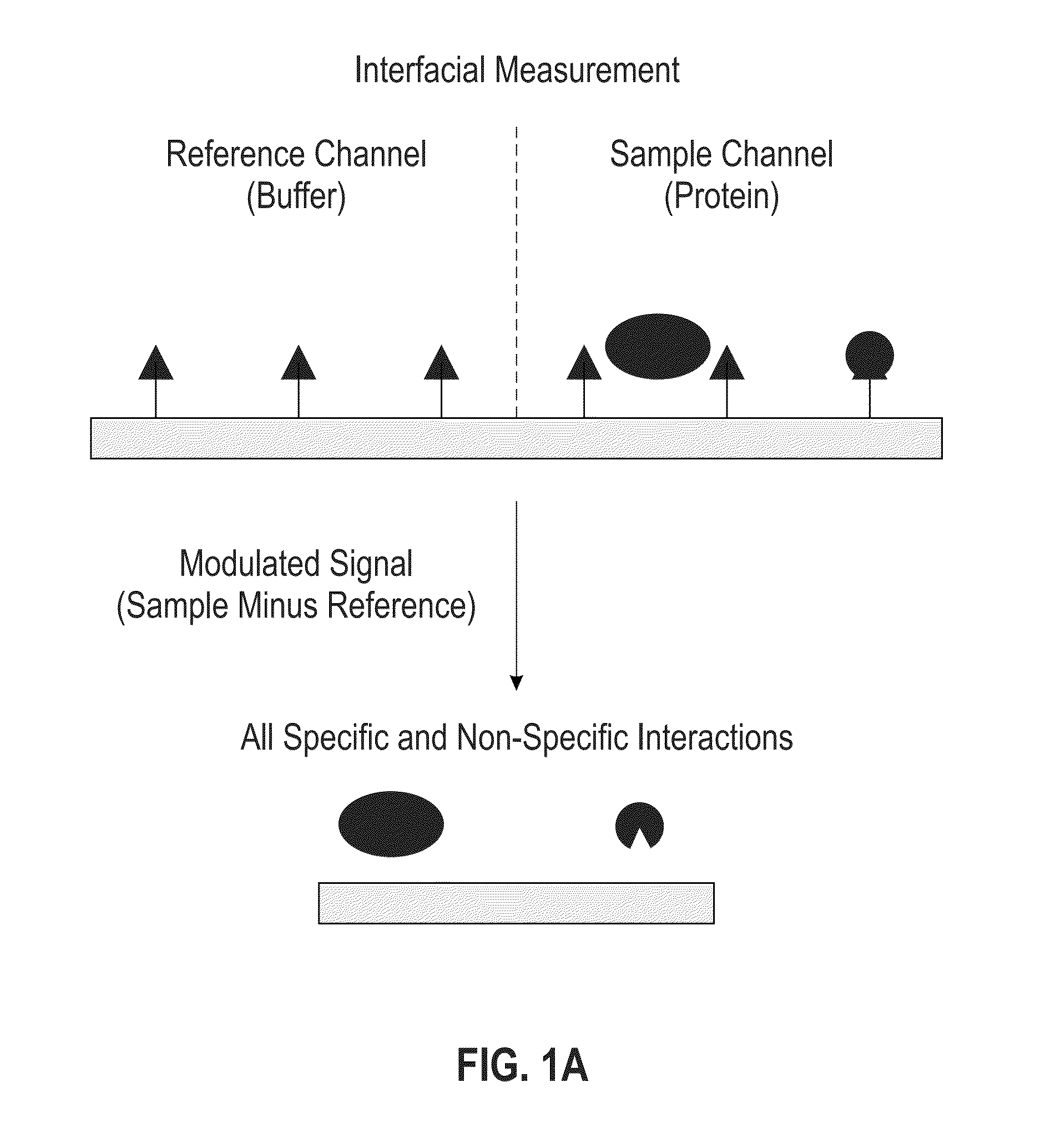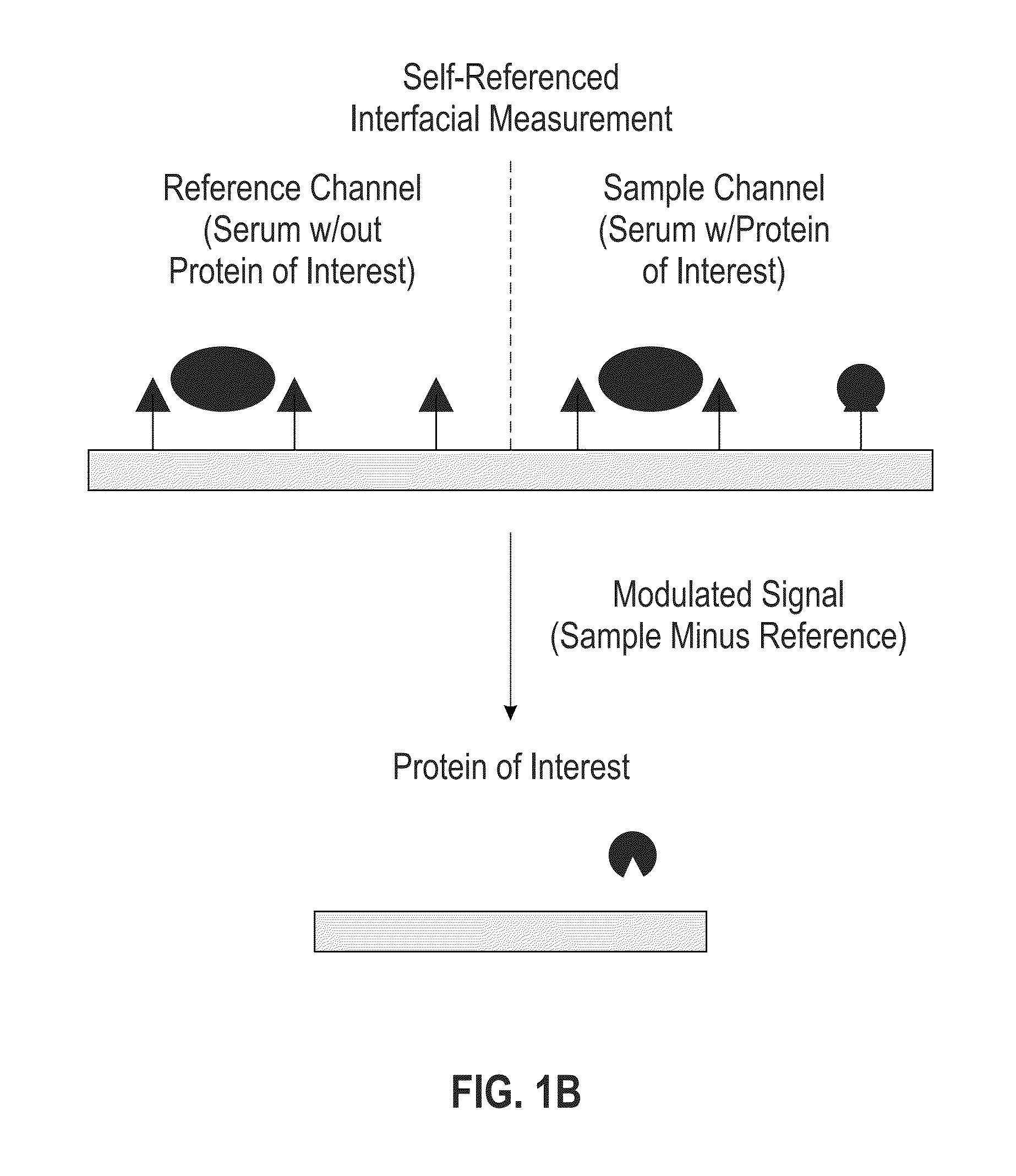Ultrasensitive biological and chemical detection using surface plasmon resonance
a surface plasmon resonance and biological and chemical detection technology, applied in the field of optical sensing, can solve the problems of chemical samples, inability to detect biological samples, etc., to achieve the effect of reducing the noise floor, reducing the noise of baseline, and eliminating the contribution of undesired
- Summary
- Abstract
- Description
- Claims
- Application Information
AI Technical Summary
Benefits of technology
Problems solved by technology
Method used
Image
Examples
first embodiment
[0051]FIG. 2A depicts adjacent streams 31 and 33 within a single channel of a fluid cell at a first position 36 corresponding to an initial time and a second position 37 corresponding to a later time, in accordance with embodiments of the present invention. At the first position 36, the adjacent streams 31 and 33 are separate streams because insufficient time has elapsed for mixing of the streams to occur, as depicted in the projection 38 of the adjacent streams 31 and 33. At the second position 37, a mixed fluid region 32 has formed between the adjacent streams 31 and 33 due to turbulent mixing of the adjacent streams 31 and 33, as depicted in the projection 39 of the streams 31, 32, and 33.
[0052]FIG. 2B depicts adjacent streams 41 and 43 within a flow cell 45, in accordance with embodiments of the present invention. The flow cell 45 has channel dimensions for achieving a low Reynolds number that produces laminar flow (i.e., flow having a Reynold's number less than 2000) under whic...
second embodiment
[0073]FIG. 4A depicts a top view of an apparatus or device comprising an optical system 52 that includes a polarizing beam splitter 63 for alternately directing a scanning beam 20 from a laser 1 onto a sample channel and a reference channel of a flow cell 9, in accordance with embodiments of the present invention. In one embodiment, the fluid in the sample channel and the fluid in the reference channel are essentially separated from each other. FIG. 4B depicts a vertical cross section of the optical system 52 of FIG. 4A, in accordance with embodiments of the present invention.
[0074]The scanning beam 20 includes a laser noise component whose amplitude reflects the spurious noise (i.e., in excess of the shot noise) generated in the laser 1. The scanning beam 20, after passing through a polarizer 2, is split by a beam splitter 5 into a reference beam 21 and a sample beam 26. Both the reference beam 21 and the sample beam 22 include the laser noise component of the scanning beam 20.
[007...
PUM
| Property | Measurement | Unit |
|---|---|---|
| operating frequencies | aaaaa | aaaaa |
| Reynolds number | aaaaa | aaaaa |
| frequency | aaaaa | aaaaa |
Abstract
Description
Claims
Application Information
 Login to View More
Login to View More - R&D
- Intellectual Property
- Life Sciences
- Materials
- Tech Scout
- Unparalleled Data Quality
- Higher Quality Content
- 60% Fewer Hallucinations
Browse by: Latest US Patents, China's latest patents, Technical Efficacy Thesaurus, Application Domain, Technology Topic, Popular Technical Reports.
© 2025 PatSnap. All rights reserved.Legal|Privacy policy|Modern Slavery Act Transparency Statement|Sitemap|About US| Contact US: help@patsnap.com



